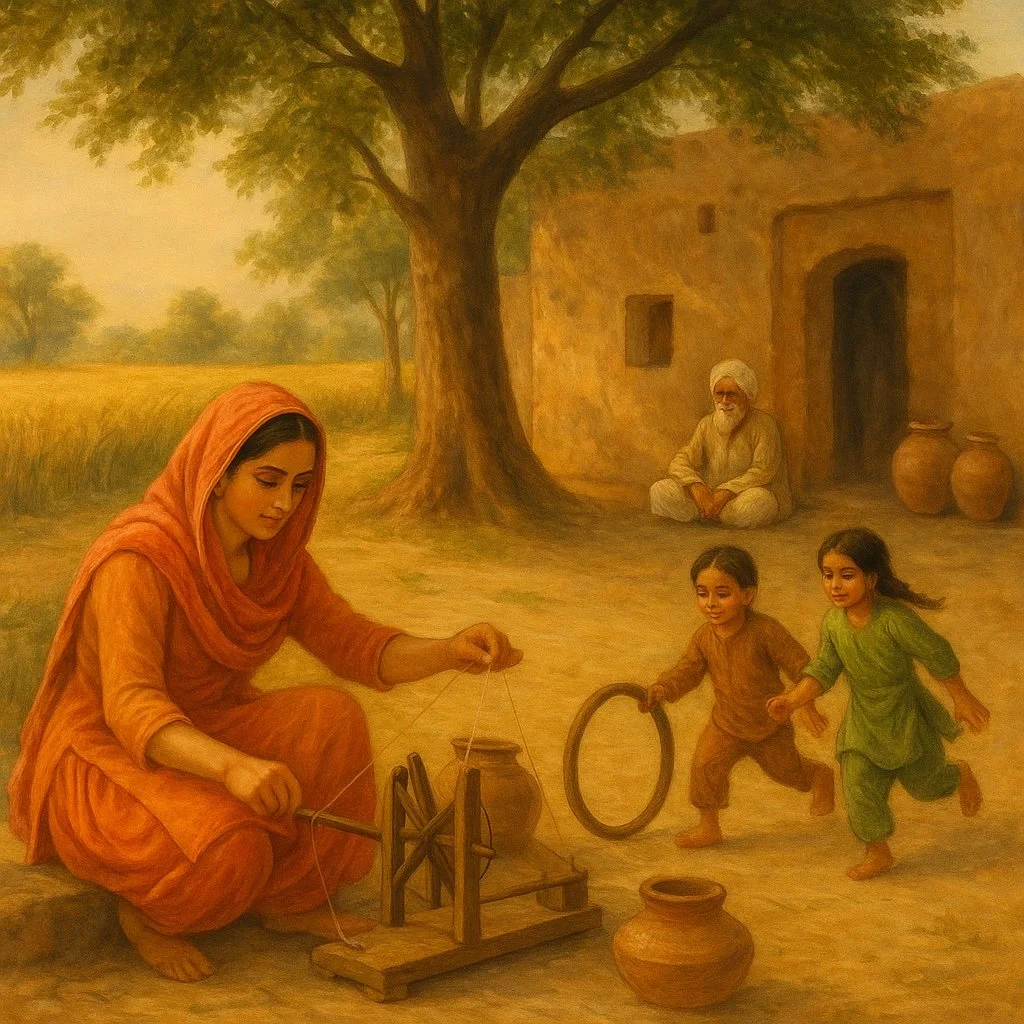1700s Punjab
THE SETTING: 1700s Punjab
In the 1700s, there was no single Punjab. The region was carved up under the declining Mughal Empire, and the Delhi court's grip on the land was weakening. What held Punjab together wasn’t a capital - it was rhythm. A rhythm shaped by seasons, soil, and social memory.
Punjab existed as a region, not a state. Its governance was fractured. Its people were not.
UNDER MUGHAL RULE:
Technically, Punjab was a Mughal subah - province within the empire. But power was unevenly distributed.
In cities like Lahore and Multan, imperial governors ruled.
In rural areas, power flowed through zamindars - local landlords and village cheifs.
Revenue collectors came and went. So did justice.
Most Punjabis weren’t preoccupied with who sat on the throne in Delhi. Their lives revolved around harvests, births, deaths, and local honour. The empire was present in Punjab, but not personal.
A TYPICAL VILLAGE DAY: THE UNWRITTEN RHYTHM
Most homes were self-sustaining. They made their own tools. Their own food. Their own futures. Wisdom wasn’t in books. It was in phrases and advice passed through tongue.
Men went to the fields, tending wheat, cotton, sugarcane.
Women managed homes, raised children, spun cotton, sang.
Children played barefoot, mimicking elders.
Elders sat under trees, telling stories passed down for generations.
DECLINE OF THE MUGHALS, RISE OF THE MISLS
As the Mughal Empire weakened, Punjab didn’t collapse. It adapted. The 1700s were the breeding ground for misls - local Sikh-led confederacies that began as bands of resistance and became powerful military forces.
The people behind the empire
A farmer.
A carpenter.
A potter.
A shepherd.
A healer.
A mother.
A storyteller.
The reason Punjab survived - when empires fell.
No empire can stand without the people beneath it.
Because history isn’t just about who ruled Punjab -
It’s about who lived it.
The Punjab of the 1700s didn’t need statehood to exist.
It was already alive - in the rustle of wheat fields, in songs passed from grandmother to granddaughter, in hands that worked the soil without ever asking who ruled it.
Empires came and went.
But this Punjab remained.
It still stands.
A depiction of Punjab many centuries ago.
To those forgotten farmers, artisans, and elders —
your memory lives on, not in textbooks, but in the land you never left.With reverence for your quiet legacy,
– TrishSaab